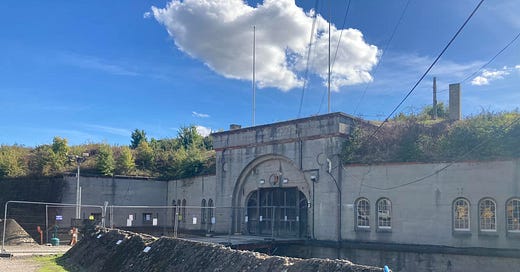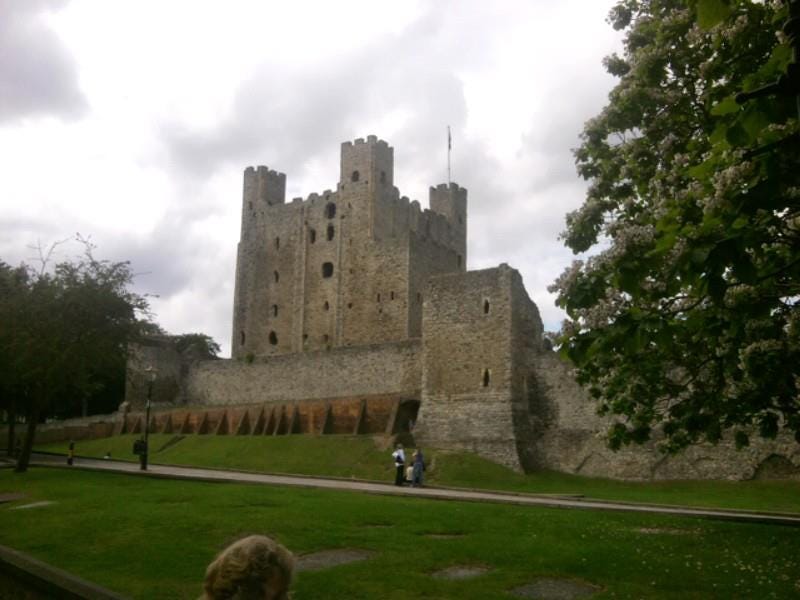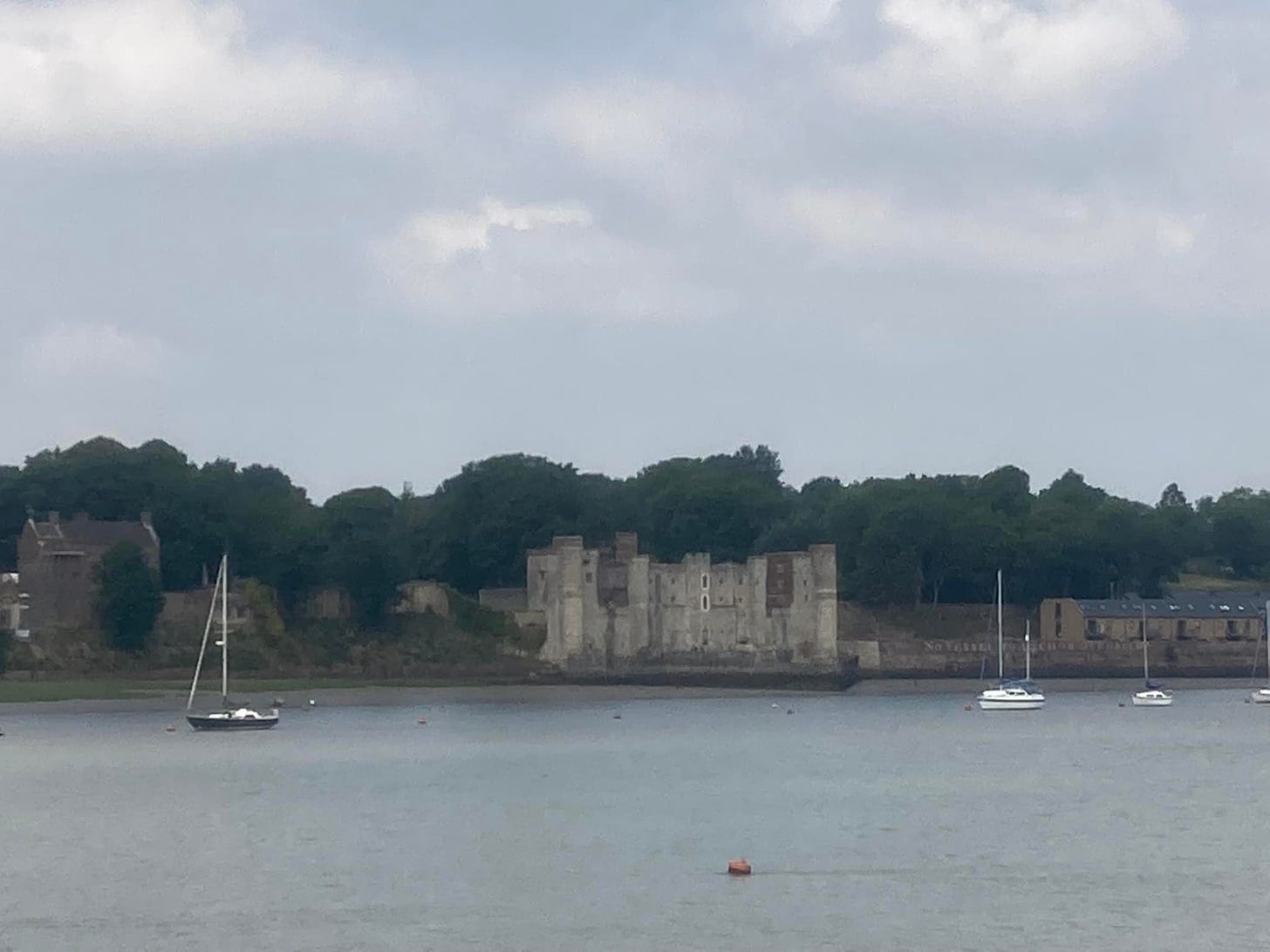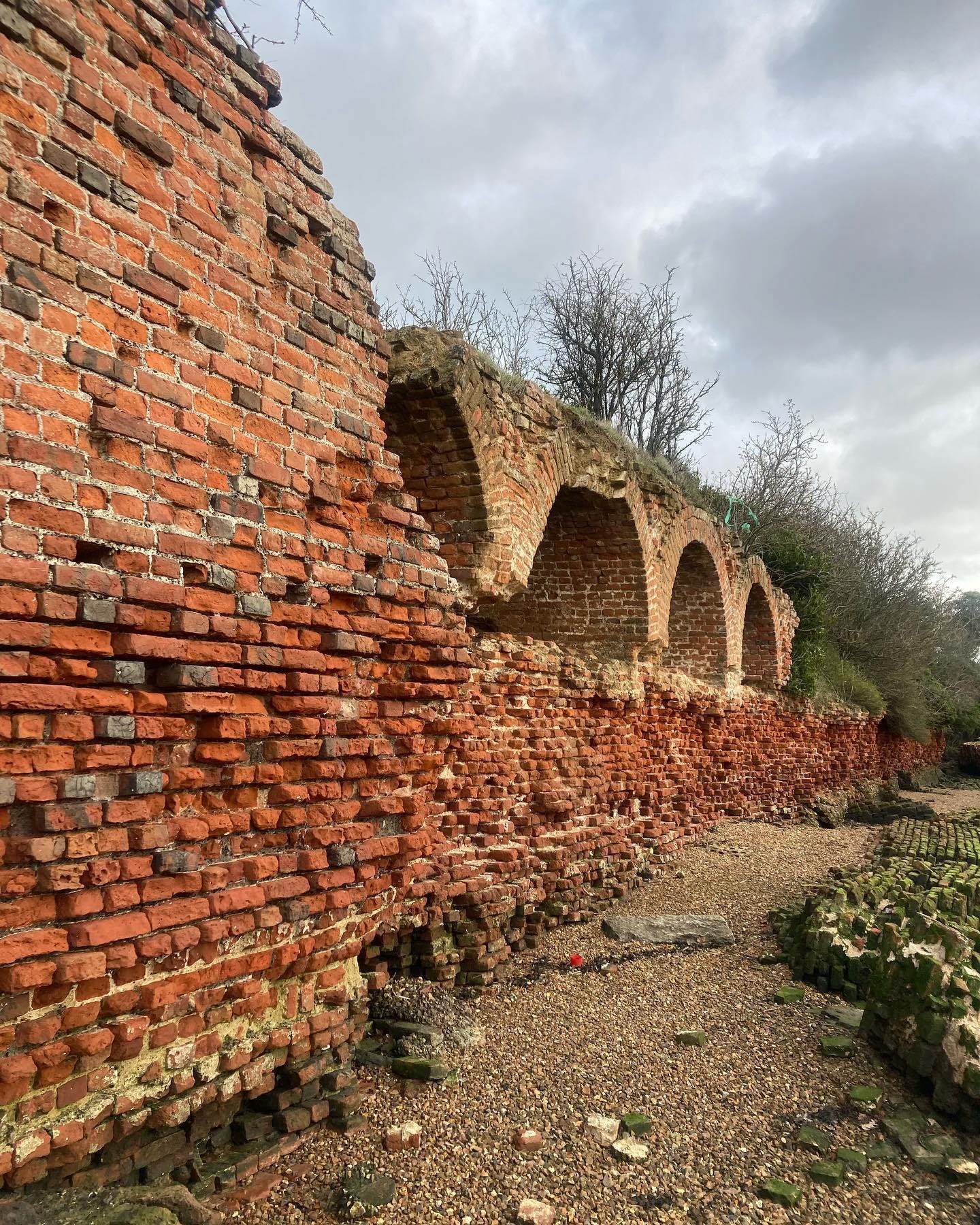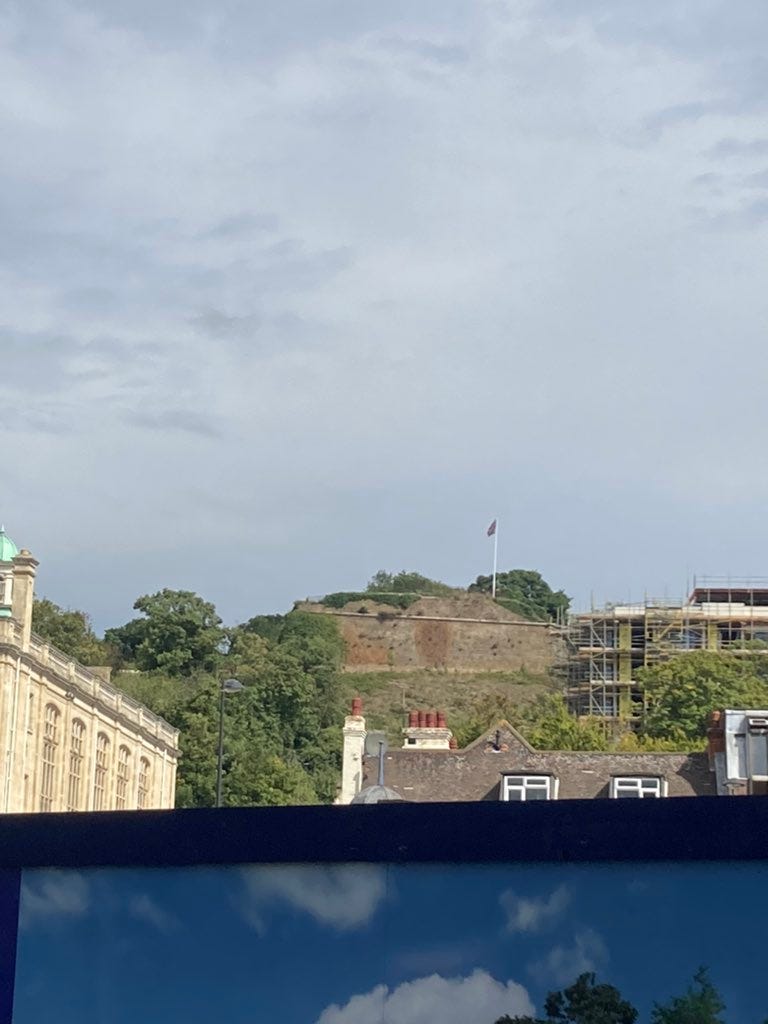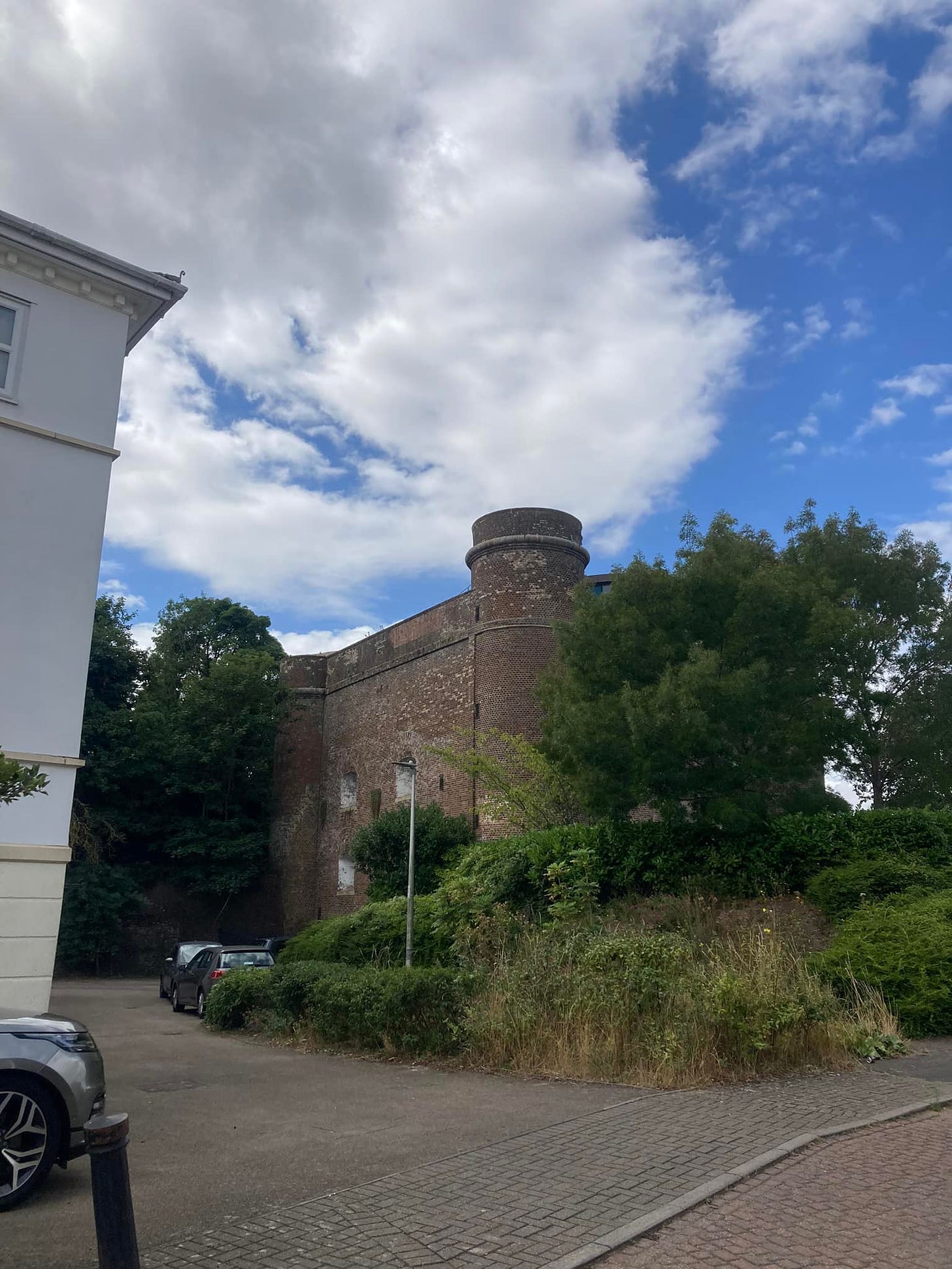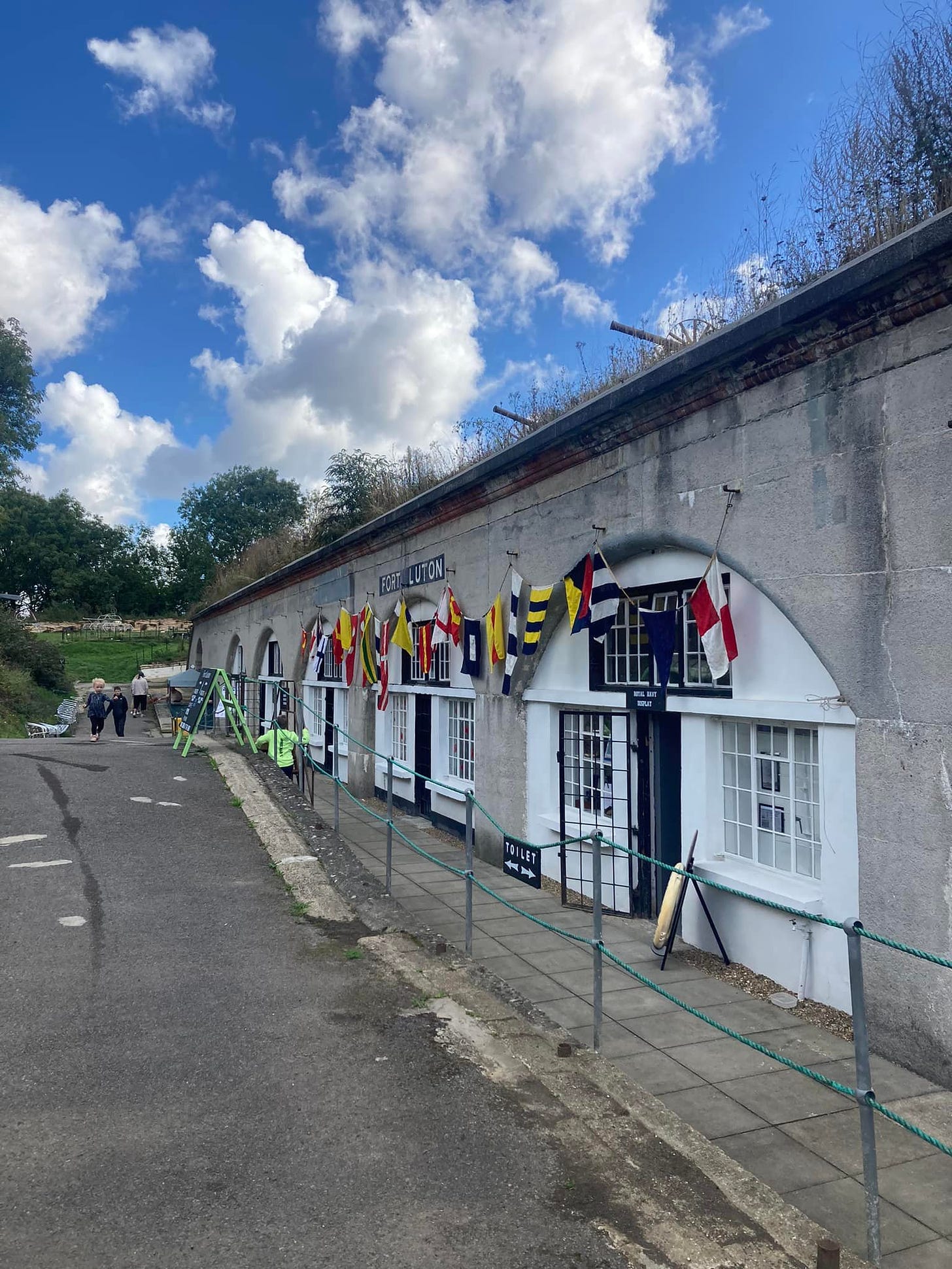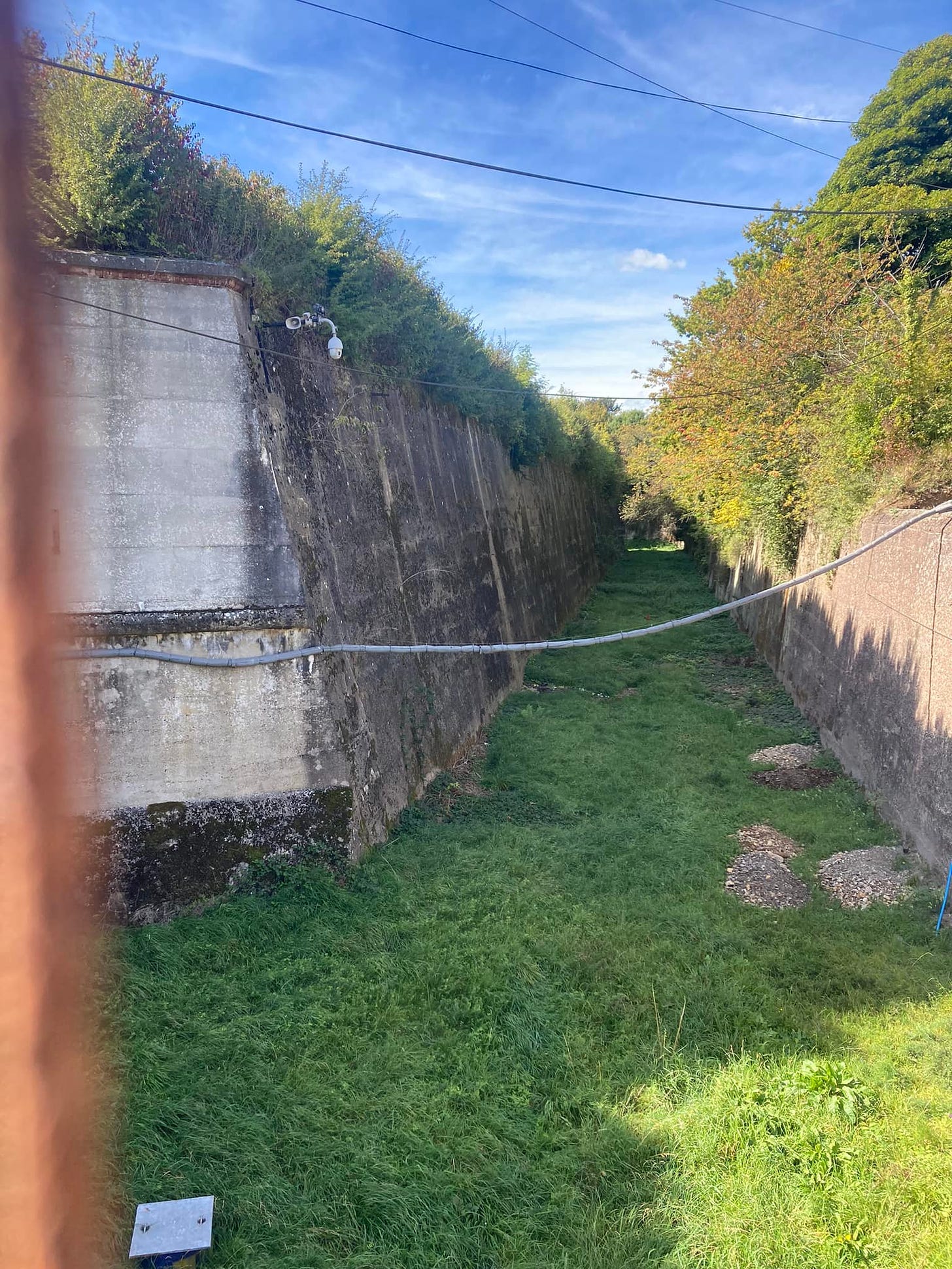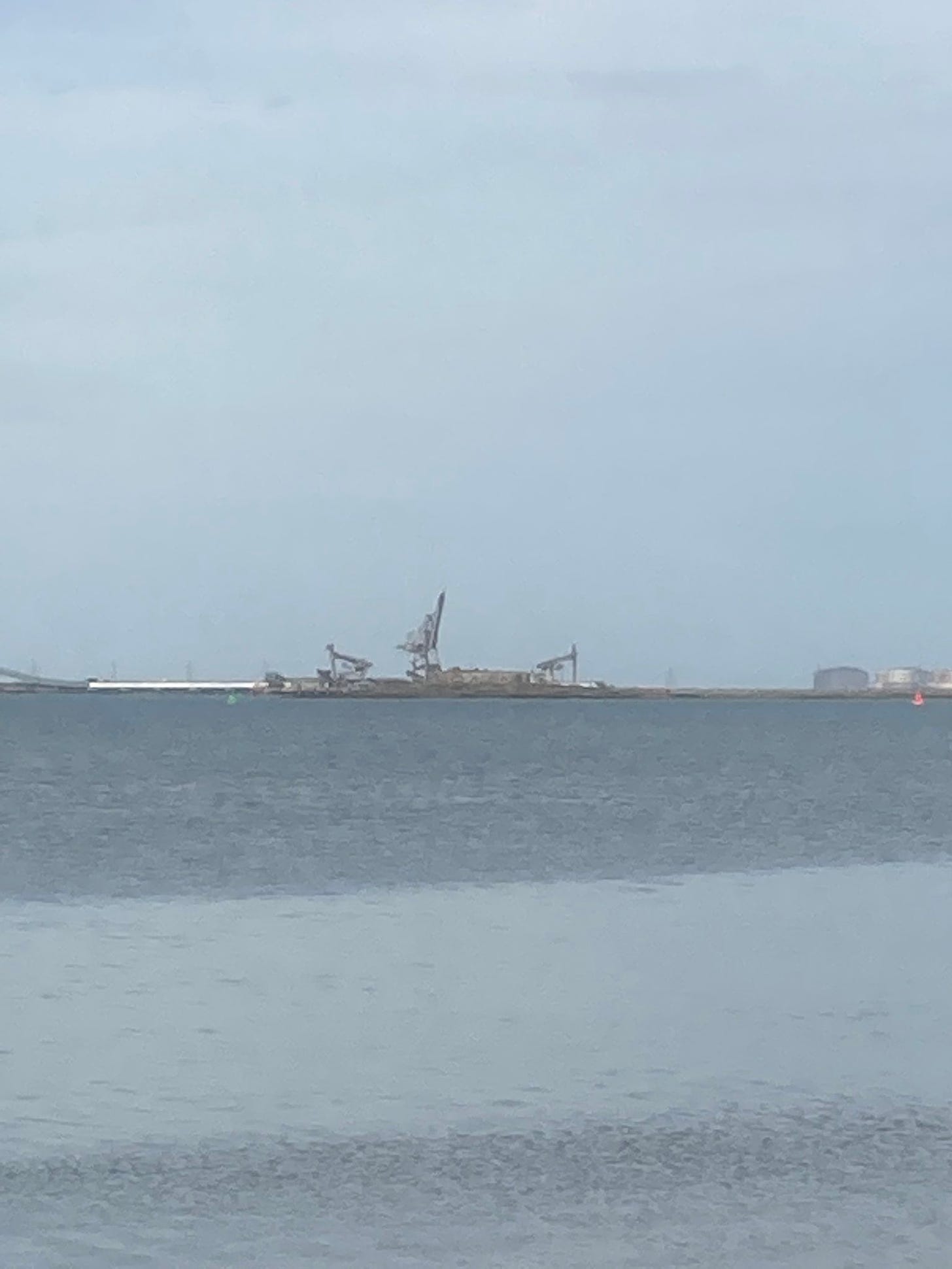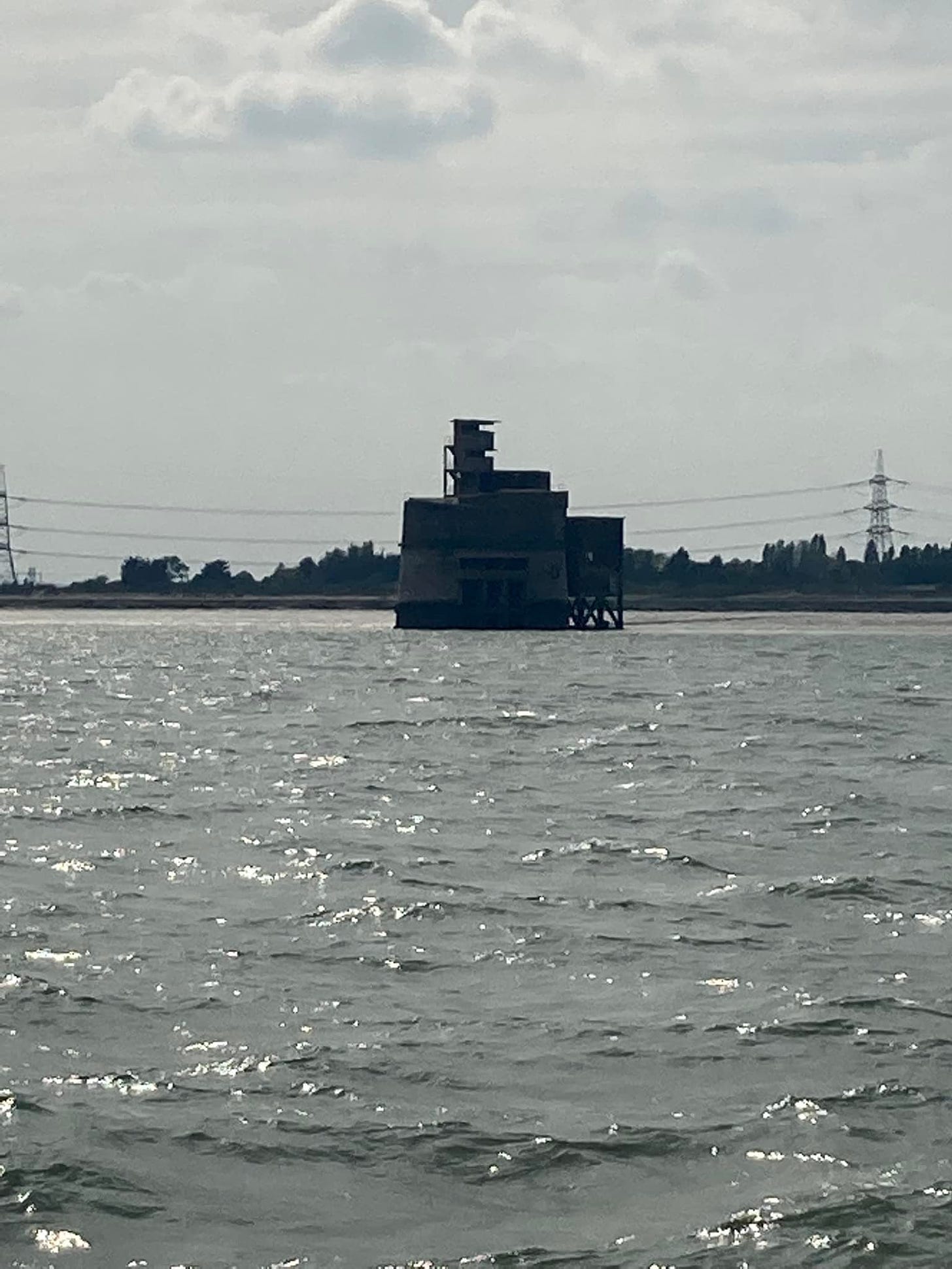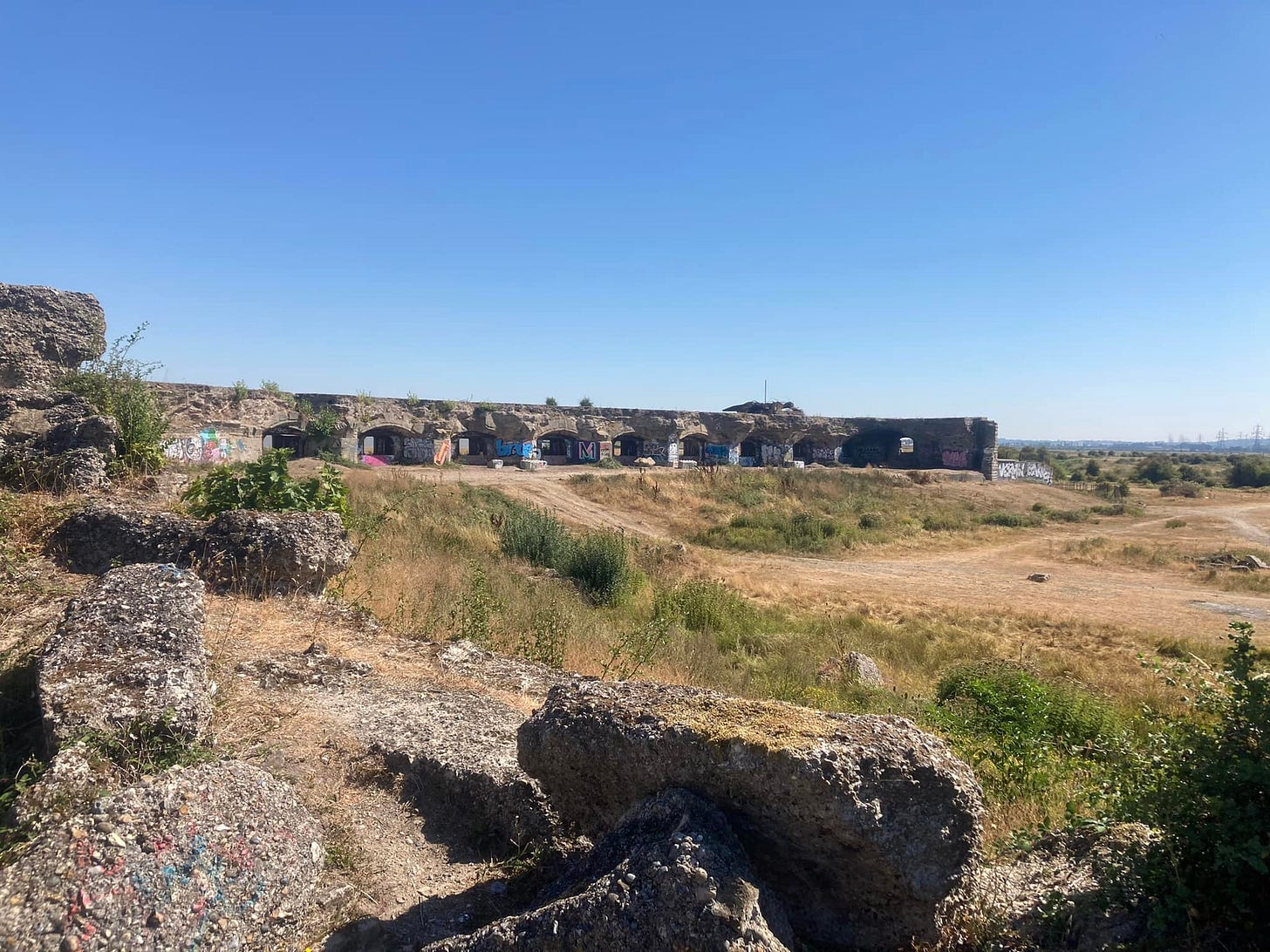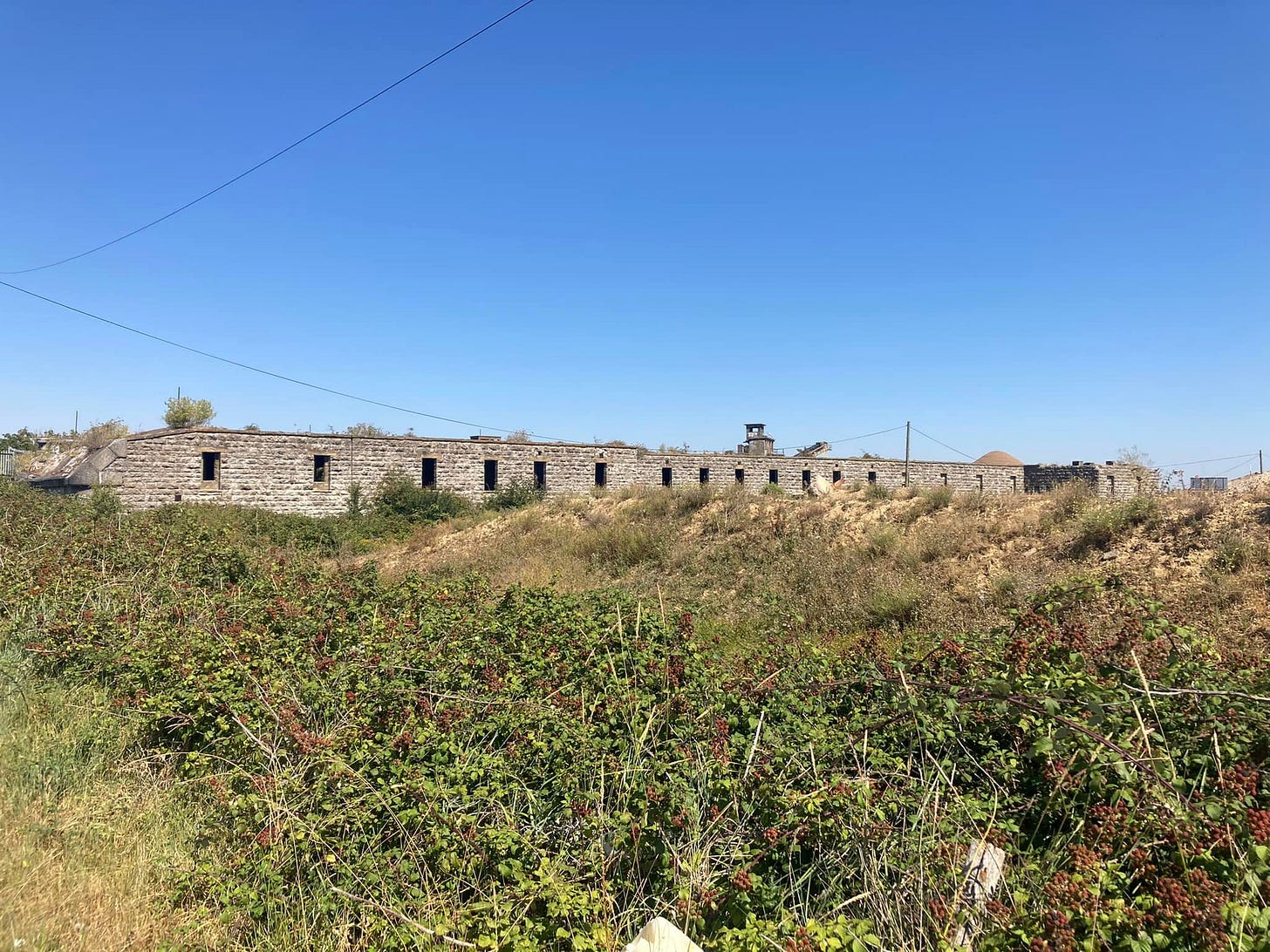Photographs of Medway's defences
Since 1667 the Medway and Thames estuaries were extensively defended
The Medway estuary has been defended to various degrees from the time of the Roman invasion up until the end of the Cold War with an ever increasing radius as time went on. I’ve got an odd obsession with the Palmerston forts and have spent my (child free) days off hiking around the Medway and Thames estuaries to look at them and thought I would share some of my pictures. I do intend on writing a bit more of a deep dive into the forts and what they were used for at somepoint in the future.
Not much remains of the original Roman fortifications of Rochester where city walls were erected with a small fortress to protect the river crossing. The Normans built a stone keep as well to protect the bridge and Rochester Castle still stands today though in a bit of a ruined state.
There is a fun fact about the keep; in 1215 the forces of King John besieged the castle and dug a tunnel below one of the towers and burnt pig carcasses which caused the tower to collapse. This caused the defenders to surrender. When the tower was rebuilt it was built in the new style so was round and thus different from the three square towers.
With the establishment of Chatham Dockyard under the reign of Henry VIII and its expansion Upnor Castle was built on the opposite bank guarding the river with a battery of guns in case any enemy should sail down river to attack the yard.
In 1667 the Dutch Navy carried out a raid on both the Thames and Medway estuaries where Sheerness was temporarily captured and most of the ships in the yard were burnt with the Royal Charles, the King’s flagship, taken back to Holland.
The Crown was angry at what is still referred to as the greates defeat of the Royal Navy in home waters and new fortifications were established, one at Cockham Wood and one at Fort Gillingham next to St Mary’s island. Both forts would provide artillery cover for any ships that passed close to the Yard.
Sadly Fort Gillingham no longer exists and there is very little of Cockham Wood and what remains is slowly being eroded by the river - though a piece of the red brick that had come away and was laying in the sand by the river now resides on my book shelf.
Further Inner defences were built in Medway to protect the dockyard from a land invasion and there are the Great lines that stretched from the river up to and around Fort Amherst. There were gun emplacements, deep defencive ditches, rifle slits, trenches, fields of fire and a large garrison. This does really require a post on its own and I have quite a few pictures of the Fort and lines having taken my children quite a few times to the Fort.
There was a similar Fort overlooking the River at a 90 degree angle to Amherst between Chatham and Rochester called Fort Pitt which very little remains of. A third fortification was Fort Clarence which sat above the river at Rochester cutting off an approach to the Medway towns from the land.
After the Napoleonic wars ended it was felt that defences were no longer needed and what existed was enough but as the Victorian period kicked in and the concern of War with France again plagued peoples minds fresh defences were thrown up including Fort Luton which was the first.
Soon afterwards Palmerston forts at Borstal, Bridgewood, Horsted and Darland are built whilst all defences at Pitt and Amherst are extended. Sadly Bridgewood and Darland no longer exist and Borstal is inaccessible due to the Young Offenders institute.
There are two other Palmerston Forts which were not built to protect the Dockyard from a land invasion but from a seabourne raid and they are Forts Hoo and Darnet which are on marshy islands in the middle of the river.
With the forts being spread around the hills on the outskirts of the Medway towns there was one last place to put defences and the Twydall redoubts were built along the land between the river towards the settlements at Grange and Twydall incase anyone marched along the coast. These are on private property and it is hard to say how much of the redoubts remains.
Other defences were placed in the river including Hoo tower which provided the outermost defences of the estuary providing covering fire with Garrison point at Sheerness and the other end of the chain which could be raised to block the river to enemy shipping.
Sheerness really needs its own post and an excursion out to look at the sheer amount of defences that still remain from First World War towers, gun emplacements and markers.
The Thames estuary also had defences with a battery at Shornemead which provided artillery support for anyone who had navigated past Hoo, Slough and Cliffe forts and were on their way to Gravesend where another fort was awaiting for them.
The nearby Fort Cliffe does still have some of the remnants of the Brennan torpedo launch slip still nearby.

